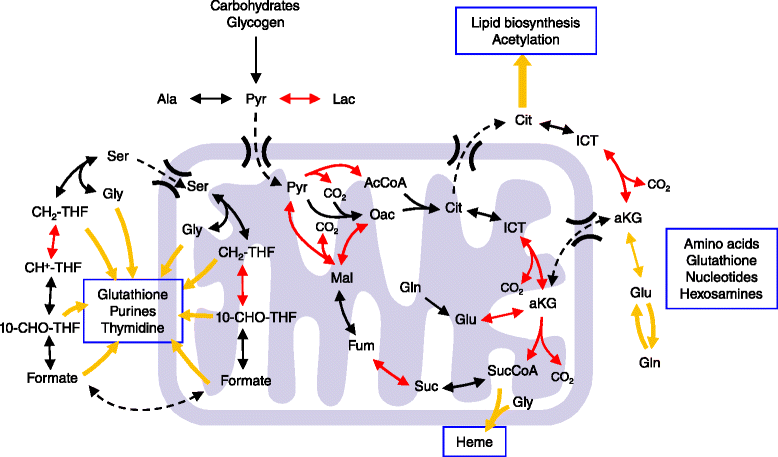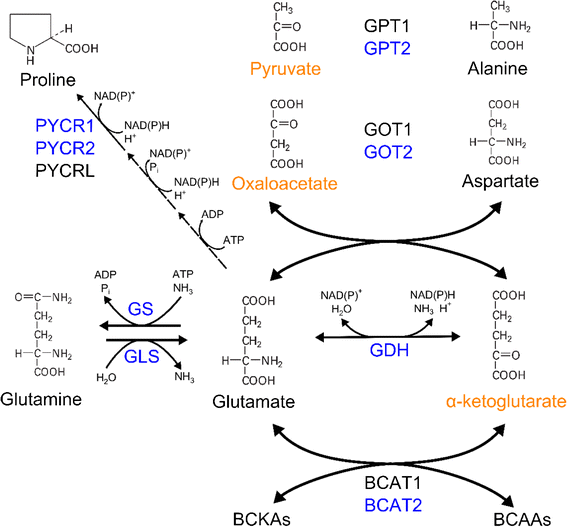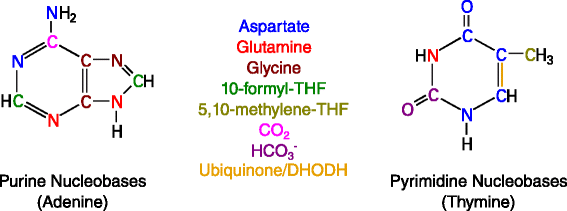Mitochondria as biosynthetic factories for cancer proliferation
- PMID: 25621173
- PMCID: PMC4305394
- DOI: 10.1186/s40170-015-0128-2
Mitochondria as biosynthetic factories for cancer proliferation
Abstract
Unchecked growth and proliferation is a hallmark of cancer, and numerous oncogenic mutations reprogram cellular metabolism to fuel these processes. As a central metabolic organelle, mitochondria execute critical biochemical functions for the synthesis of fundamental cellular components, including fatty acids, amino acids, and nucleotides. Despite the extensive interest in the glycolytic phenotype of many cancer cells, tumors contain fully functional mitochondria that support proliferation and survival. Furthermore, tumor cells commonly increase flux through one or more mitochondrial pathways, and pharmacological inhibition of mitochondrial metabolism is emerging as a potential therapeutic strategy in some cancers. Here, we review the biosynthetic roles of mitochondrial metabolism in tumors and highlight specific cancers where these processes are activated.
Keywords: Amino acids; Anaplerosis; Biosynthesis; Cancer; Lipogenesis; Mitochondria; Nucleotides.
Figures



References
Grants and funding
LinkOut - more resources
Full Text Sources
Other Literature Sources
Research Materials

